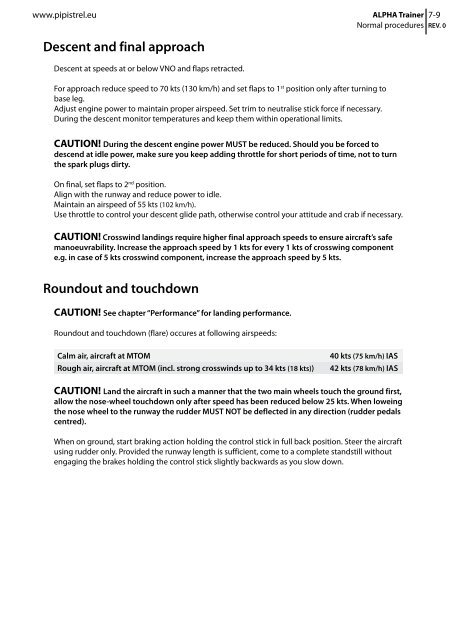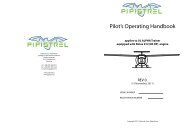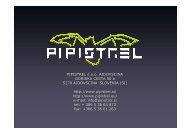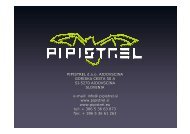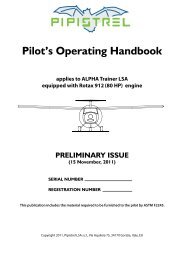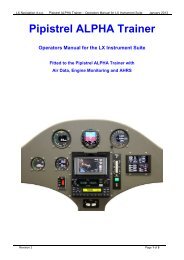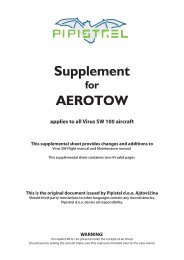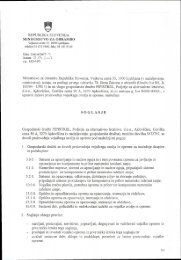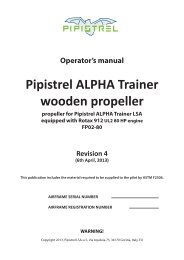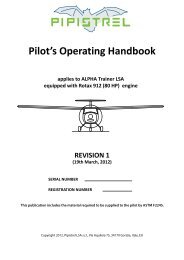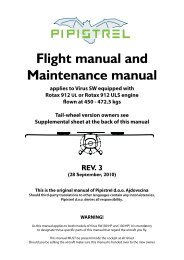Create successful ePaper yourself
Turn your PDF publications into a flip-book with our unique Google optimized e-Paper software.
www.pipistrel.eu<br />
<strong>ALPHA</strong> <strong>Trainer</strong> 7-9<br />
Normal procedures REV. 0<br />
Descent and final approach<br />
Descent at speeds at or below VNO and flaps retracted.<br />
For approach reduce speed to 70 kts (130 km/h) and set flaps to 1 st position only after turning to<br />
base leg.<br />
Adjust engine power to maintain proper airspeed. Set trim to neutralise stick force if necessary.<br />
During the descent monitor temperatures and keep them within operational limits.<br />
CAUTION! During the descent engine power MUST be reduced. Should you be forced to<br />
descend at idle power, make sure you keep adding throttle for short periods of time, not to turn<br />
the spark plugs dirty.<br />
On final, set flaps to 2 nd position.<br />
Align with the runway and reduce power to idle.<br />
Maintain an airspeed of 55 kts (102 km/h).<br />
Use throttle to control your descent glide path, otherwise control your attitude and crab if necessary.<br />
CAUTION! Crosswind landings require higher final approach speeds to ensure aircraft’s safe<br />
manoeuvrability. Increase the approach speed by 1 kts for every 1 kts of crosswing component<br />
e.g. in case of 5 kts crosswind component, increase the approach speed by 5 kts.<br />
Roundout and touchdown<br />
CAUTION! See chapter “Performance” for landing performance.<br />
Roundout and touchdown (flare) occures at following airspeeds:<br />
Calm air, aircraft at MTOM<br />
Rough air, aircraft at MTOM (incl. strong crosswinds up to 34 kts (18 kts))<br />
40 kts (75 km/h) IAS<br />
42 kts (78 km/h) IAS<br />
CAUTION! Land the aircraft in such a manner that the two main wheels touch the ground first,<br />
allow the nose-wheel touchdown only after speed has been reduced below 25 kts. When loweing<br />
the nose wheel to the runway the rudder MUST NOT be deflected in any direction (rudder pedals<br />
centred).<br />
When on ground, start braking action holding the control stick in full back position. Steer the aircraft<br />
using rudder only. Provided the runway length is sufficient, come to a complete standstill without<br />
engaging the brakes holding the control stick slightly backwards as you slow down.


